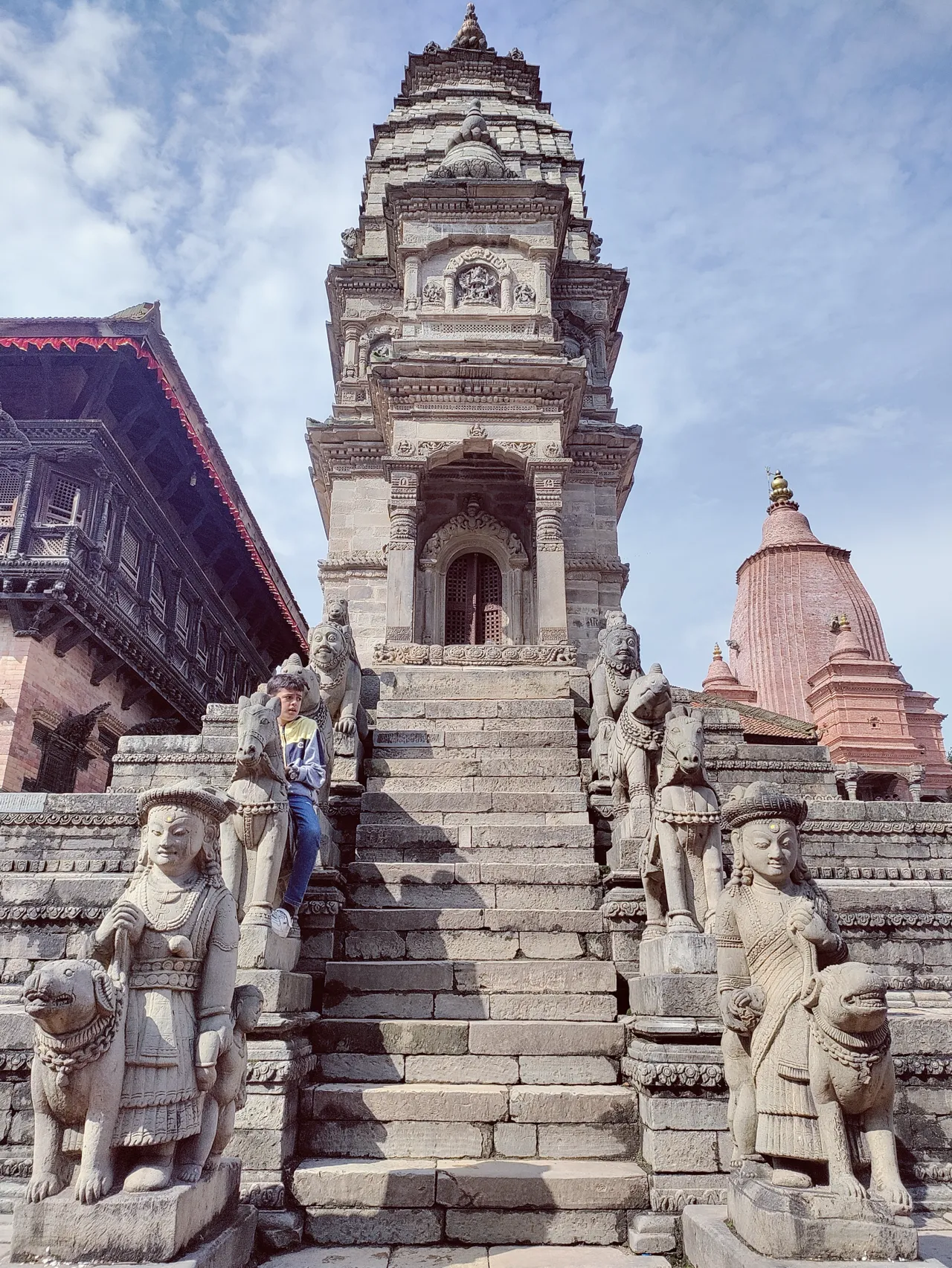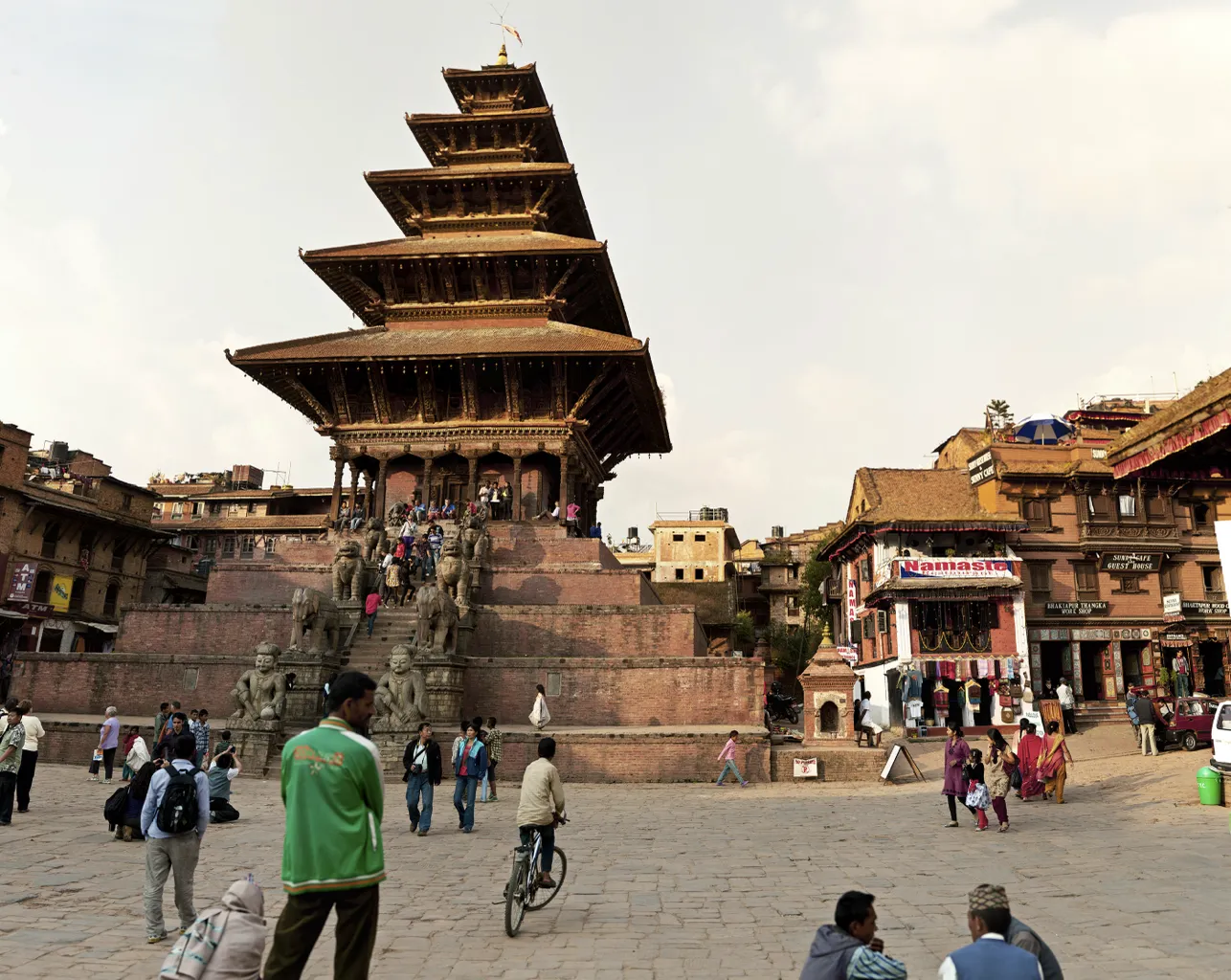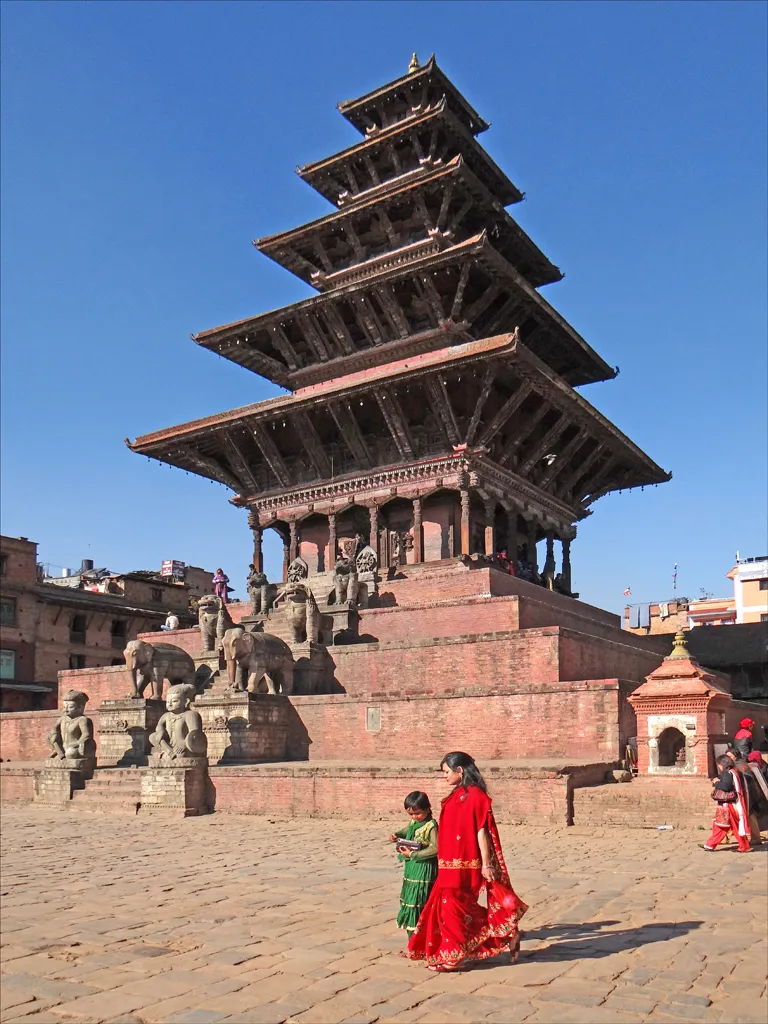Introduction to Nyatapola Temple
The Nyatapola Temple, located in Bhaktapur, Nepal, stands as a quintessential representation of the architectural prowess prevalent in the Kathmandu Valley during the early 18th century. This five-story edifice, dedicated to the Hindu goddess Siddhi Lakshmi, is not only a spiritual beacon but also a symbol of resilience, having endured the devastating effects of seismic activities through the centuries, most notably during the 1934 and 2015 earthquakes.
Get your dose of History via Email
Historical Context and Construction
Constructed during the reign of King Bhupatindra Malla, the temple dates back to 1702 AD. Its initiation was guided by the need for a monumental structure to manifest the king’s devotion and to reinforce the cultural sanctity of Bhaktapur. The Nyatapola Temple’s swift completion, requiring a mere five months, is reflective of the effective mobilization and expert craftsmanship present during that period.

Architectural Significance
Standing at a height of 30.48 meters (about 100 feet), Nyatapola is the tallest temple in Nepal, surpassing the architectural scale of other edifices within its vicinity. The five-story structure follows the pagoda style, which is characterized by tiered roofs and is a common sight in Nepalese religious architecture. Its robust foundation and structural integrity are evidenced by its performance during seismic events, thus, making it an exceptional study of advanced engineering practices of the time.
Symbolism and Guardian Deities
Every aspect of Nyatapola’s design is steeped in symbolism. The temple’s five roofs are said to represent the five basic elements, whereas the five stories symbolize the increase in spiritual attenuation as one ascends towards the sky. At its base, the temple is fortified by figures of male and female deities said to be ten times stronger than average humans. Each pair of figures at the successive plinths is noted for possessing tenfold powers compared to those at the plinth immediately preceding it. These guardian deities serve both a symbolic and practical purpose, illustrating a hierarchical strength and acting as protectors of the temple and its divine inhabitant.

Craftsmanship and Artistry
The temple is widely acclaimed for its exquisite craftsmanship. The woodcarvings and sculptures that adorn the temple’s struts, doors, windows, and tympanums are exemplary of Newar craftsmanship. These fine details manifest not only the artisans’ skill but also the strong cultural heritage and aesthetic sensibilities of the Newar people who dominate the Kathmandu Valley’s cultural landscape.
Cultural Role and Festivities
Nyatapola Temple plays a vital role in the living culture of Bhaktapur and continues to be an active site for religious and communal festivities. It is central to the celebration of Biska Jatra, an annual festival that marks Nepalese New Year, where chariot processions and various other religious ceremonies take place. As such, Nyatapola serves as both a physical manifestation and an active participant in the cultural practices of the Kathmandu Valley.
Preservation and Tourism
The temple’s resilience and historical importance have made it an integral part of Bhaktapur’s cultural heritage, which has been recognized as a UNESCO World Heritage Site. As a result, it attracts a significant number of tourists and devotees, contributing to its preservation as a historic site and to the livelihood of the local community. Preservation efforts are ongoing to ensure that this architectural marvel continues to stand as a testament to the cultural richness and historical legacy of Nepal.
Conclusion
The Nyatapola Temple is not just an architectural wonder but also a living chronicle of the Newari culture and Nepalese religious practice. Through its historical background, impressive construction, and active participation in cultural events, it offers an invaluable window into the past and an inspiration for future generations in terms of cultural continuity and architectural resilience.

